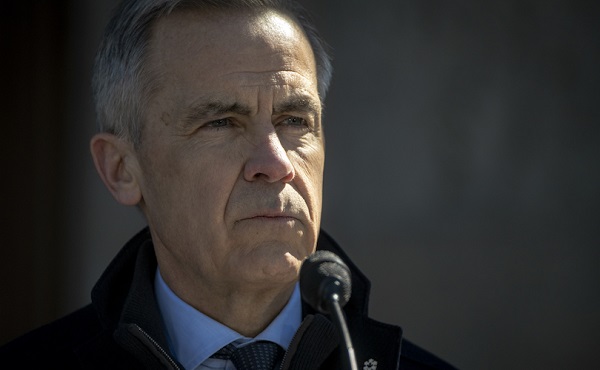Environment
Climate Alarmists Want To Fight The Sun. What Could Possibly Go Wrong?

 From the Daily Caller News Foundation
From the Daily Caller News Foundation
What should we say when one of America’s pre-eminent media platforms endorses a plan so fraught with unknowns and pitfalls it invites potential global catastrophe?
That’s what the editorial board at the Washington Post did on April 27 in a 1,000-word editorial endorsing plans by radical schemers and billionaires to engage in various efforts at geoengineering.
The Post’s editors engage in an exercise of saying the quiet part out loud in the piece, morphing from referring to monkeying around with the world’s ability to absorb sunlight as “a forbidden subject,” to concluding it is “indispensable” and “urgent” in the course of a single opinion piece. Sure, why not? What could possibly go wrong with such a plan?
What could go wrong with plans to, say, block sunlight with thousands of high-altitude balloons? Or with a plan that involves spraying the upper atmosphere with billions of tons of sulfur particles? Or with a plan to spend trillions of debt-funded dollars to build a gargantuan shield placed in stationary orbit in outer space?
The editors are so cocksure in their arrogance that they even admit some such concepts have already been tried out, writing, “Climate geoengineering is so cheap and potentially game-changing that even private entrepreneurs have tried it out, albeit at small scales.”
The “small scale” experiment to which the editors refer took place in Baja, Mexico, where researchers launched two large balloons filled with sulfur dioxide particles into the stratosphere. The goal was to measure the sun-dimming effects of the sulfur dioxide, a real, actual pollutant that the Environmental Protection Agency and regulators all over the world have spent the last half century attempting to remove from the atmosphere.
It turned out that Luke Eisman, an entrepreneur who financed the experiment, launched the balloons without seeking prior approval. When Mexican officials found out it had been conducted, they quickly moved to ban such geo-engineering projects on the grounds that they violate national sovereignty. Reuters reports that Mexico’s environment ministry statement said it would seek a global moratorium on such geoengineering projects under the Convention on Biological Diversity.
But despite such concerns in Mexico, here come the Post’s editors advocating we simply just have to trust the science. You know, like we trusted the “science” of COVID vaccines and the “science” of locating giant offshore wind farms in the middle of a whale migration corridor off the Northeast coast, right? Sure. After all, what could go wrong?
The editorial writers go on to cite a similar, larger scale project being promoted by climate-engineering scholars David Keith at the University of Chicago and Wake Smith at Yale. These gentlemen propose to try to lower temperatures by spewing out 100,000 tons of sulfur dioxide – again, a real pollutant humanity has worked decades to eliminate – at an annual cost of $500 million (no doubt to be paid for by more taxpayer debt) using what they refer to as “15 souped-up Gulfstream jets” to create what could accurately be called chemtrails.
In a piece published in February at the MIT Technology Review, the scientists say the project could be mounted as soon as five years from now, which we should all probably consider a threat rather than a mere projection.
Talk of mounting similar geoengineering projects has been ramping up in recent years. In 2021, Bill Gates said he was investing in a project based at Harvard University to spray tons of calcium carbonate particles into the stratosphere above Scandinavia, but the project was ultimately cancelled due to understandable outrage from indigenous groups and environmentalists.
Fellow billionaires Jeff Bezos and Facebook co-founder Dustin Moskovitz have also plowed millions into bioengineering projects.
But until recently, the thought of mounting projects designed to block out sunlight was, like the agenda to intentionally reduce the global population, a subset of their agenda that climate alarmists have tried to keep mainly under wraps. The reason is obvious: Whenever such radical and frankly dangerous ideas are made public, people tend to look at one another and ask, “who in the world would want to do that?”
Now come the members of the Washington Post editorial board, joining Gates and Bezos and Moskovitz in answering that question. Way to go, folks.
David Blackmon is an energy writer and consultant based in Texas. He spent 40 years in the oil and gas business, where he specialized in public policy and communications.
Environment
Evidence does not support ‘climate crisis’ claims

From the Fraser Institute
By Matthew Lau
The federal Liberal government “committed over $160 billion… to support our green economy” from 2015 to 2024, and proposes to ban the sale of gas-powered vehicles by 2035, all on the premise that there’s a climate change crisis. And it’s spent many millions trying to convince Canadians there’s a climate emergency. But is that true?
A recent report (authored by John Christy, Judith Curry, Steven Koonin, Ross McKitrick and Roy Spencer) and disseminated by the U.S. Department of Energy provides a very different view.
The report examined how carbon dioxide and greenhouse gas emissions (as a result of human activity) have affected or will affect climate, extreme weather and other metrics of societal wellbeing. While the report examines the United States, other research suggests what most people intuitively know—because Canada’s climate is colder, global warming could produce higher benefits and lower costs for Canada than the U.S. For example, Canada’s agriculture and tourism industries would likely benefit from warmer temperatures.
So what does the report say? One observation is that “most extreme weather events in the U.S. do not show long-term trends. Claims of increased frequency or intensity of hurricanes, tornadoes, floods, and droughts are not supported by U.S. historical data.” Moreover, “forest management practices are often overlooked in assessing changes in wildfire activity.” The same could be said in Canada. There’s good evidence that bad government management of forests—rather than primarily climate change—is to blame for much of the recent wildfire activity.
The authors of the report further emphasize that claims of human activity causing climate disasters are shaky: “Attribution of climate change or extreme weather events to human CO2 emissions is challenged by natural climate variability, data limitations, and inherent model deficiencies.”
A separate article in Regulation Magazine by policy analyst David Kemp makes the same point. Kemp notes that according to the UN’s Intergovernmental Panel on Climate Change (IPCC), even under an implausible worst-case climate change scenario, it would not be until 2050 to 2100 that heavy rain increases to a point where a real upward trend, beyond what would be considered natural statistical noise, would emerge. For droughts, cyclones, severe storms, river floods, landslides and fire weather, it would take until at least 2100.
The Department of Energy report also finds that “global climate models generally run ‘hot’ in their description of the climate of the past few decades—too much warming at the surface and too much amplification of warming in the lower- and mid-troposphere.” In general, therefore, many projections of future global warming and associated economic damages are “exaggerated.”
In the final chapter of their report, the authors conclude government actions in the U.S., including aggressive regulatory measures, “are expected to have undetectably small direct impacts on the global climate and any effects will emerge only with long delays.”
In Canada, government policies would have only a fraction of the “undetectably small” impacts U.S. government policies could have on climate. As of 2022, Canada accounted for only 1.4 per cent of global greenhouse gas emissions, with emissions from China (19.2 times higher) and the U.S. (8.4 times higher) much higher than emissions from Canada. That’s unsurprising given Canada’s much smaller population and economy.
When federal politicians or climate activists next claim there’s a climate crisis or climate emergency, or that the latest weather disaster was the result of climate change due to human activity, and that government must take significant and costly measures to reduce climate change, Canadians should be skeptical. The evidence simply does not support such claims.
Business
U.S. rejection of climate-alarmed worldview has massive implications for Canada

From the Fraser Institute
The United States Department of Energy recently published a report, which essentially summarizes the U.S. government’s rejection of the 30-year-old, United Nations-centric, climate-alarmed consensus worldview.
In short, the report rejects the idea that carbon dioxide (CO2)—manmade or otherwise—constitutes a traditional pollutant—that is, a substance which is out of its natural role/place in the environment, and is causing harm. Rather, according to the report, CO2 is more properly seen as a fertilizer: manmade CO2 additions to the atmosphere do take the “carbon” out of a natural reservoir and put it into the air, but the effect is not toxic nor harmful. Rather, additional CO2 stimulates plant growth around the world, causing a well-documented phenomenon of “global greening.”
The report also disputes predictions that human emissions of CO2 (or other greenhouse gases) will result in dangerous climate warming or other dangerous knock-on effects such as changes to extreme weather of various sorts (floods, droughts, storms, wildfires). Such claims, the report holds, are exaggerated.
The report also, not surprisingly, diverges from the UN-climate-alarmed consensus idea that the solution to climate change risk is global greenhouse gas (GHG) emission suppression. Rather, when it comes to policy, the report comes down firmly on the idea of adaptation to potential climate disruptions, regardless of cause: “Technological advances such as improved weather forecasting and early warning systems” have substantially reduced losses from extreme weather events. Better building codes, flood defences and disaster response mechanisms have lowered economic losses relative to GDP. Further, heat-related mortality risk has dropped substantially due to adaptive measures including the adoption of air conditioning (which relies on a robust economy) and the availability of affordable energy. “U.S. mortality risks… even under extreme warming scenarios are not projected to increase if people are able to undertake adaptive responses.”
What does this mean for Canada?
First, one must assume that it portends a continued U.S. movement away from GHG mitigation efforts and programs involving direct emission suppression from sources such as power plants, manufacturing facilities, vehicles, commercial and residential buildings, and so forth.
It will also likely mean less intrusive efforts to suppress GHG emissions indirectly with various energy efficiency standards, agricultural practices and the mandated replacement of GHG-emission power production with lower/less-GHG emitting wind and solar technologies. Oh, and once again, the much-ballyhooed transition from internal combustion transportation to electric vehicles is likely to take it in the neck, at least in the U.S. for the next four years.
Again, what does this mean for Canada? In a nutshell, it means the U.S. will cut a fairly large amount of spending on GHG suppression measures while Canada (Carney government, et al) plans to increase such spending. And the U.S. will also cut spending—and consumer costs—for electric vehicles while Canada will increase both. Because virtually all of the U.S. focus is about lowering the costs of energy and the technologies that use it—and energy is the foundational input of developed economies—all of that will likely make the U.S. more economically competitive, from the individual to the firm, compared to Canada.
The more Canada elbows up and doubles down on joining the UN’s GHG-suppression regime, the less competitive Canada will make itself compared to the U.S., which—Trump’s tariffs and current politics notwithstanding—remains the most relevant touchstone for whether or not Canadian policies are economically rational.
-

 Alberta2 days ago
Alberta2 days agoAlberta Education negotiations update: Minister Horner
-

 Alberta2 days ago
Alberta2 days agoBreak the Fences, Keep the Frontier
-

 Opinion2 days ago
Opinion2 days agoRFK Jr. Reveals Unforgettable Details About Charlie Kirk in Emotional Tribute
-

 Business2 days ago
Business2 days agoCarney’s Ethics Test: Opposition MP’s To Challenge Prime Minister’s Financial Ties to China
-

 Business2 days ago
Business2 days agoCarney government’s housing GST rebate doesn’t go far enough
-

 Business1 day ago
Business1 day agoGlobal elites insisting on digital currency to phase out cash
-

 Media2 days ago
Media2 days agoCancel culture wins ultimate victory as murder of Charlie Kirk ghoulishly celebrated by radical Left, media included
-

 Business1 day ago
Business1 day agoRed tape is killing Canadian housing affordability





